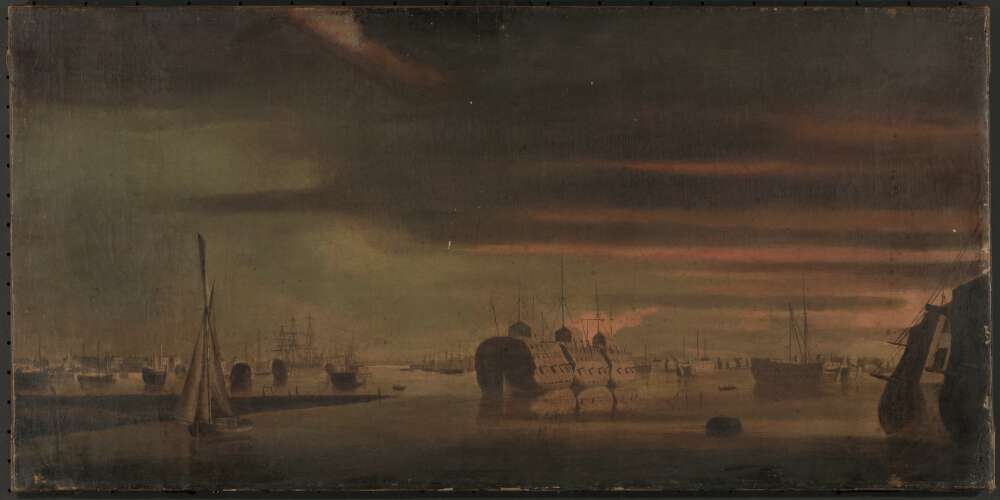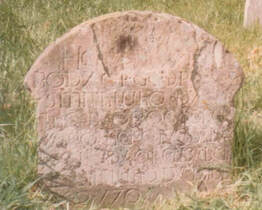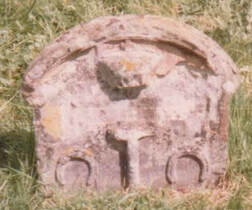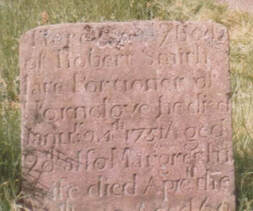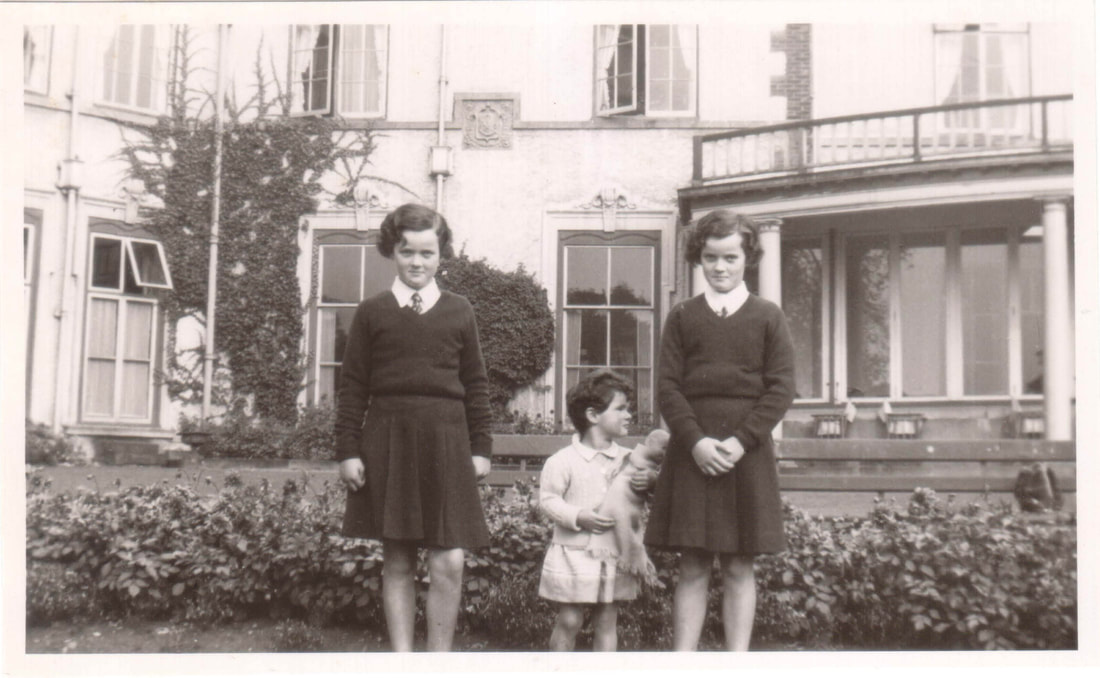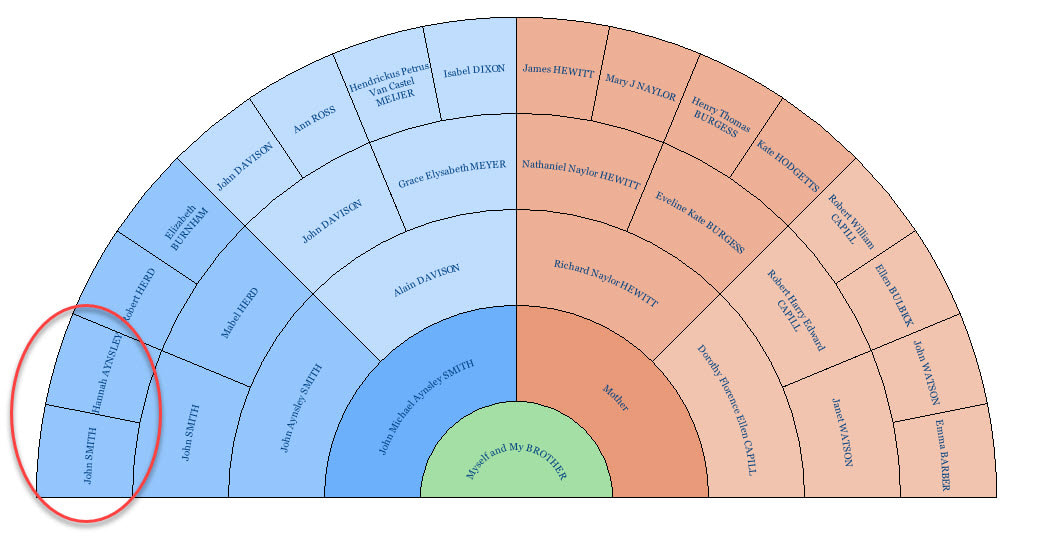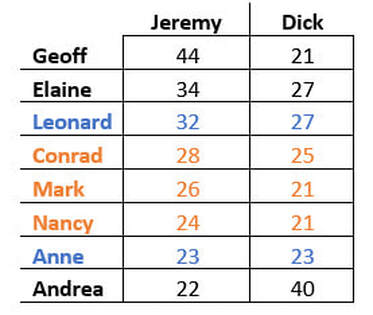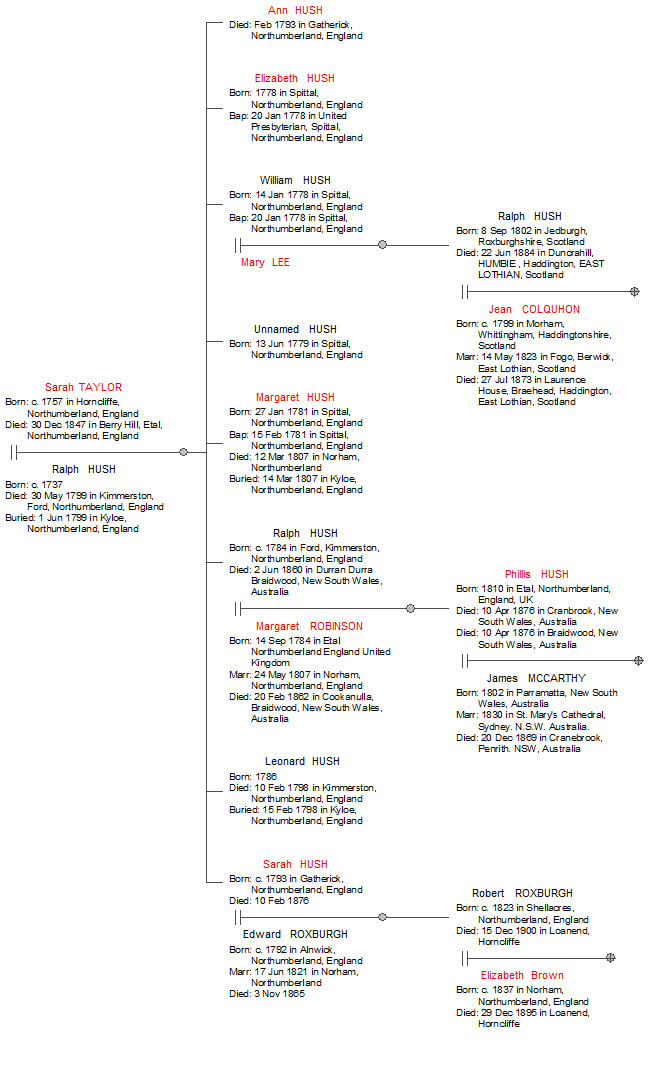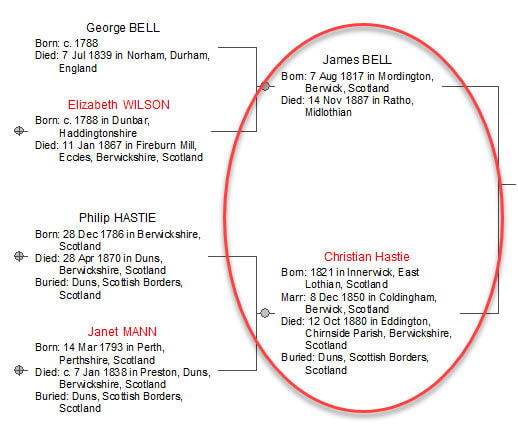|
Family history researchers are increasingly turning to autosomal DNA (atDNA) to help extend their ancestral knowledge and it is little wonder as it can be an immensely powerful tool. But are folks using atDNA testing to maximum effect? I suspect in a great many cases the answer is no. There are a myriad of reasons why this is the case but it is not my intention to cover them here. Rather, I shall be keeping this post simple by looking only at matches in Ancestry.com and focusing on three basic principles that can greatly enhance your chances of success. I cannot emphasise these three points enough:
Test as Many Family Members as Possible Memorial Inscriptions in Cornhill Churchyard: These inscriptions were noted in 1918 and by the time these photographs were taken in 1986 much of the writing had already been lost. Today they are barely legible. 'Here Lyeth the body of George Smith who died 8 October 1690. Here rests also the body of his wife Elizabeth who died 2 July 1701' (Stone left and Centre) and 'Here lyeth the body of Robert Smith Portioner in Hornclove who died 22 January 1751 aged 90. Also Margaret his wife who died 27 April 1742 aged 60' (Stone to the right.) Testing relatives acts like signposts or way markers, giving us fixed points from which to start navigating the way through our DNA matches, from known points of shared ancestry towards the unknown. But before dashing off to purchase tests for every aunt, uncle, cousin etc., it is helpful to remember three basic principles to ensure the tests being purchased are relevant to your quest.
It is also important to recognise which relatives are relevant to test for a particular research scenario. For the remainder of this post I shall be using my tree, my DNA matches, and the DNA matches of my relatives who have also tested using an example of a specific paternal line hypothesis which came to light as result of this broader testing policy. It reveals connections to renowned Australian convict Ralph Hush, previously hidden from view due to a smokescreen of ‘selective’ genealogy that without atDNA may have remained undiscovered. I hope it will also illustrate what can be achieved from what essentially started out as set of dismal results. After many years, I still have only 149 matches in the Ancestry database with whom I share 20 cMs of DNA or more. My brother on the other hand has a slightly more respectable 229, that is 80 more individuals for whom Ancestry will currently display mutual matches. Although I have one or two sticking points in my tree, I have no specific ancestor mysteries to solve therefore my interests lie in uncovering all aspects of my ancestral past; but who do I have available to test?
Scenario One – Maternal Line Ancestral InvestigationsMy mother is very much still with us and has tested her DNA. Should I wish to investigate any generation of my maternal line my brother’s DNA will be of no additional benefit. Some of the maternal DNA my brother and I share will overlap and some will be different. Nonetheless, neither he nor myself will have inherited any DNA that our Mother does not carry herself. Nor will our combined DNA reflect the total genetic information carried by our mother. Approximately 25% will inevitably been lost during the recombination process as we were created. Her identical twin will share exactly the same DNA as my mother and therefore will add no new genetic information to the investigation either. Nor will her children, (my first cousins), as the only DNA relevant to the investigation will have been inherited from their mother who is genetically identical to mine. For this reason these cousins will share nearer 25% of their DNA with myself and my brother rather than 12.5% making them genetically half siblings rather than first cousins. My mother’s other living sibling, however, is definitely one to test, as although some of the DNA she has inherited from her parents will be the same as that carried by the twins, some of it will also differ. On the same basis, the DNA of all three children of Mum’s deceased sibling will be relevant as they will carry portions of their mother’s genetic information which, as above, will have significant elements of overlap but crucially also elements that have not been inherited either by Mother or her other siblings. Scenario Two – Paternal Line Ancestral Investigations As my father is deceased, my brother’s DNA will be extremely useful if not vital to any investigation of my paternal ancestry. Although we match on roughly 45 – 52% of our total DNA (both maternal and paternal), the remainder is different. Even so, we are likely still to only reach around 75% of the DNA my father once carried himself. As my father had no siblings and his only first cousin available to test is unwilling to do so, the testing net has been cast wider to encompass his Aynsley-Smith second cousins, three of whom to date have been wonderfully helpful in this regard. Sisters Cathy and Vivie, and their first cousin Dick. Each shares a varying amount of DNA with both my brother and myself. 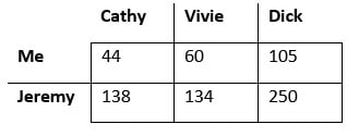 According to the Shared Centimorgan Project I share below the average (122 cMs) for a second cousin once removed (2c1r) relationship with all three and my brother Jeremy shares above. In fact, the whopping 250 cMs he shares with Dick is above the average (229 cMs) for a straight second cousin relationship, and this has paid real dividends. (It should be noted that the children of my father’s 1st cousin, (my own 2nd cousins) could also be tested but although they are a closer relationship to me, they are genetically further from the ancestral DNA, and in this particular case not as relevant to the investigation.) In terms of my paternal line research, testing to date has provided the following DNA signposts: My brother and I represent the DNA from ALL our father’s ancestral lines and thus could theoretically match with descendants of any of his blood relatives at any point in history. The DNA we share with our 2c1r Aynsley-Smith cousins, however, immediately catapults us genetically back to our 2nd great grandparents on our direct paternal Smith line. This is where the respective ancestral pathways between the 2c1r cousins merges with John Smith (1813 – 1881) and his wife Hannah Aynsley (1837 – 1922). In the absence of any closer relationship, the DNA my brother and I share with our Aynsley-Smith cousins MUST have been inherited through this couple. It therefore represents the DNA inherited from their own respective ancestors. Interestingly, when our 4th cousin Jane (a 3rd cousin 1 removed to Cathy Vivie and Dick) on the same Smith line is added to the mix, the picture changes somewhat and I become the highest match of the five. Cathy shares no DNA with Jane at all, such is the fickle nature of atDNA! Matching Mutual Matches to each other Before my brother and Dick tested their DNA with Ancestry, my paternal line research through DNA matching had stalled. I have only one mutual match with Cathy and Vivie which we believe from mutual matches of the mutual match, may relate to ancestors of Hannah Aynsley although we have yet to place them in the family tree.
Step One in the matching process was not to try and establish how these individuals matched my brother and/or Dick, but to try and establish some commonality as to how the matches were related to each other. The main reason for this is that the way in which matches match each other will generally be the way in which they link to the tester, or where the link to the tester springs from. This approach is particularly helpful if the relation that connects matches to your mutual ancestors is not yet in your family tree. Some of Dick and Jeremy’s matches already had small family trees but some invariably had none. As with any aspect of DNA matching it will be necessary to do some legwork, particularly reconstructing matches’ trees and spotting errors in those that already exist; how much work depends on the quality of information you have to work with. It varies every time! Conrad, who had a reasonable tree of 98 individuals was the first port of call. His research very quickly suggested he may share great grandparents or 2nd great grandparents with Mark (who has no tree) in Joseph Hibberson (1812 – 1890) and Mary Ann McCarthy (1831 – 1903) making Conrad and Mark 2nd to 3rd cousins with each other. This was a positive start as the relationship is not too close and date wise, it is also a similar generation to the point at which Dick and Jeremy’s pedigrees collide with John Smith and Hannah Aynsley. Mary Ann McCarthy’s mother was recorded as Phillis Hush, and she in turn was the daughter of Ralph Hush (1784 – 1860) and Margaret Robinson (1784 – 1862). Whilst the name did not appear in my family tree, the surname Hush was ‘ringing bells’. Bypassing the matches with no trees at all for now, Nancy had a small tree with 7 people from which it was possible to quickly build her pedigree back through her grandmother Margaret Dunlop Hush to a William Hush baptised at Spital in 1778, the same day as his sister Elizabeth Hush. The parents of these two plus an unnamed child in 1779 together with a Margaret Hush baptised at Spittal Presbyterian Chapel in 1781 were Ralph Hush senior and his wife Sarah Taylor, of ‘Long Reach’ (Longridge) whose name DOES appear in my tree. From the fact that Mark, Conrad and Nancy all matched each other it was beginning to look likely that this couple were also the parents of Ralph Hush junior, the father of Phillis above. A further DNA match, ‘Jim’, at 19 cMs to my brother whose line traced back to William Hush 1778 was another mutual match to them all which would further evidence this hypothesis. From my initial investigations to date it appears that the relationships between these four are broadly as follows: Mark & Conrad 2 or 3rd cousins to each other 6th cousin to Nancy 6th cousin to Jim Nancy 4th cousin to Jim Dick & Jeremy 6th cousin once or twice removed to Conrad, Mark, Nancy and Jim Elsewhere, Leonard and Anne appear to be first cousins to each other and their paths converge with ‘Ernie’ who is another match of 22 cMs to my brother (but who does not match Dick) at a James Bell (1817 – 1887) and Christian Hastie (1821 – 1880). As well as Leonard and Anne, Ernie is also a mutual match to Conrad, Mark, Nancy and Elaine, but the potential upward link to John Smith d. 1742 and Elizabeth his wife has not yet been identified. Distant relationships such as these have a great many ‘steps’ between individuals to establish the common connection or mutual ancestor. This example illustrates just how essential it is to have a family tree that is as broad as it is deep when looking to prove relationships that are hidden way back in the past. Build Out Your Tree in Every Direction As a family we are extremely fortunate in this regard as we have been left a legacy of family memorabilia and generations of extensive research. However, it is still not complete, as I don’t believe any family history ever truly is! There are always more relations to unearth and more information to discover. This branch of our family tree was no exception. Sarah Taylor who appears in my tree was born circa 1757 and is recorded as the daughter of James Taylor and Elizabeth Smith. Elizabeth Smith was the daughter of John Smith of ‘Horncliff Mill’ who was buried at Cornhill on 22 April 1742. It is believed the Christian name of John’s wife was Elizabeth but to date there is no hard evidence to back this up. It is, however, thought most unlikely to have been an Elizabeth Davidson widely reported online, who married a John Smith at Norham in 1694. A Bible, which was printed in 1615, is still in the family’s possession and the first entry for the birth of a child is George smith in 1722. I hardly think the couple would have had their first child after 28 years of marriage! Plus, if Elizabeth was ‘say’ 20 at the time of her marriage, she would have been aged 48 at the time of the birth of her first child! I rather think that the union identified either belongs to either a first marriage, an earlier generation, or a different family altogether as Smith is hardly an unusual name! In my tree next to Elizabeth Smith’s entry there is a note, ‘see ‘Taylor’ in Sarah Nicholson’s letters’. Sarah Nicholson (1843 – 1932) was an avid correspondent on all things family history and exchanged at least 32 letters with George Aynsley-Smith between 1909 and 20 December 1931, less than a month before her death on 13th January 1932. The Taylor family are mentioned in several of the letters. The first is dated 16th July 1912 in which Sarah wrote: There is a Miss Dodds, elderly, come to live with Mrs Lyle. She came from Bowsden and told Jane [Sarah’s sister] one evening that her grandmother was a cousin (1st cousin) of your grandfather Smith, so I went and saw her. She says her grandmother was a Taylor and they lived in Horncliffe as her grandfather Taylor fell down the bank and was lame ever after. There were 5 sisters Taylor: her grandmother married a Lyle , one married a Sanderson, a weaver at Norham, one a Bolton, one a Roxburgh Loaned and one a name I cannot spell – Falstone – all buried at Norham. Her mother’s family used to go to Spittal Church, so some of their registers will be there… In her next letter of 9th August 1912, she follows up with the following account: Leonard Taylor James Taylor, butcher, Eyemouth ***** Marjorie Taylor m. George Sanderson, weaver Norham ***** Ann Taylor m. Hoffman, a soldier at Berwick. [of whom I have written before in Tennis & a Teapot] ***** Sarah Taylor m. John Huish. He died from burns received at Kimmerston Hall when it was burned down. Sarah died at Berry Hill. [Sarah’s husband was actually called Ralph, not John, and she died at Harperidge, (Donaldsons Lodge) the home of her daughter Sarah rather than Berry Hill (Ford & Etal)] ***** Elizabeth Taylor m. Bolton, Horncliffe and her daughter married a Turner, Horncliffe ***** Margaret Taylor m. William Lyle, Felkington. Her daughter m. Peter Dodds and her granddaughter is now in Horncliffe. It would seem there is some confusion surrounding Sarah Taylor and her spouse, and knowing what I now know, I suspect Ms Nicholson, or her informant was trying their best at a cover up by laying a bit of a smokescreen. The fact of the matter is that Ralph Hush junior, son of Sarah Taylor and Ralph Hush senior was a convicted felon, who narrowly escaped the hangman’s noose, when his sentence of death for stealing sheep was commuted to transportation for life. The case has been written about extensively, much of which can be found online not least in the Australian convict records (which includes some rather spurious information) but also on his own Wiki page! 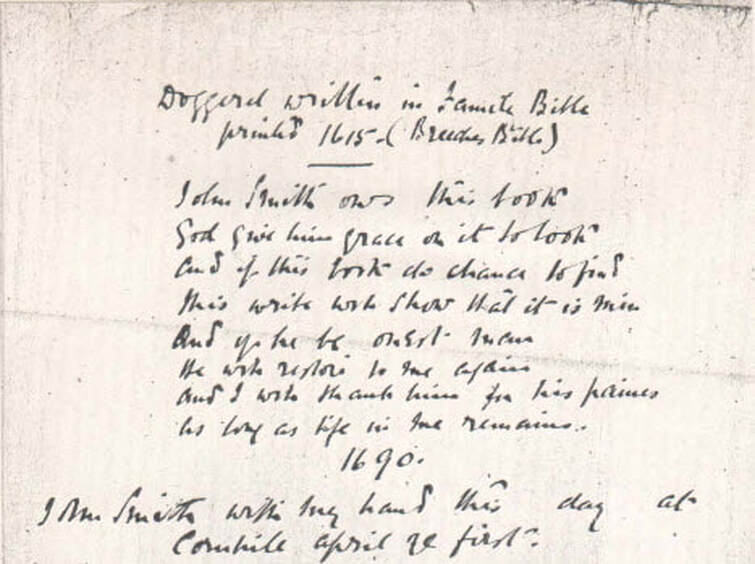 John Smith owns this book, God give him grace on it to look, And if this book do chance to find, This write will show that it is min, And if he be onest man, He will restore to me again, And I will thank him for his paines, As long as life in me remains, 1690, John Smith with my hand this day at Cornhill April the first. (Transcribed from Family Bible by George Aynsley Smith in 1915) One of these fine days it would be nice to read about some positive antics of ancestral relatives, but in the meantime I will happily take the odd criminal or two, or three as they add a considerable amount of ‘colour’. There is much more digging to do in this tranche of DNA, as I am only just scratching the surface in the Ancestry database, let alone matches elsewhere. It is incredible to think that a second cousin four times removed, who lived so long ago may hold the key to unlocking earlier generations of the Smith family for whom we currently hold just pieces of a much bigger jigsaw. It also shows that no matter how dismal your DNA matches, stick at it, test more family members, build out your tree and work out how those mutual matches are related to each other. It will pay dividends in the end! Useful LinksFor those of you interested in learning more about using DNA for historical research, here are a few links to webinars and instructional videos by my great friend and colleague Michelle Leonard who is renowned the world over as leader in the field of genetic genealogy and as a bit of a 'genes genuis':
How Testing Multiple Relatives Can Turbocharge Your DNA Research - Legacy Family Tree (Free until 2 June 2021). This webinar explains the relevance of testing multiple relatives in more depth, plus a whole lot more! If you don't already subscribe to Legacy Family Tree, access to their HUGE library of top quality webinars past and present comes highly recommended and can be purchased for only $49 per annum. Michelle has no less 22 webinar tutorials amongst in excess of 1500 available in the Legacy Family Tree library. 10% discount available if you subscribe before 1 June 2021 - use code 'turbo'. #TwiceRemoved Investigates DNA Natalie Pithers of Twice Removed interviews expert genetic genealogist Michelle Leonard, who shares her amazing DNA discoveries and family history stories. From identifying the bodies of WWI soldiers to personal feelings on a grandmother that died tragically you, Michelle’s stories give a fresh perspective on using DNA for family history. Making the Most of your Autosomal DNA Test - Family Tree Live 2019, Alexandra Palace Michelle Leonard’s talk gives an overview of how autosomal DNA testing can help you solve mysteries in – and confirm the accuracy of – your family tree. DNA is Dynamite - How to Ignite your Ancestral Research (Michelle Leonard) - Genetic Genealogy Ireland.This is a talk for beginners giving an overview of the basic information required to understand the three main types of DNA testing available for ancestral research. Michelle will explain how each test works and talk you through the first steps you should take once your results arrive. There are also links to a couple of events where you can catch Michelle live in the June newsletter - if interested either contact me or subscribe to the newsletter to keep up to speed with forth coming events.
1 Comment
Cathy Aynsley
8/6/2021 05:47:48 pm
Thank you so much, Susie, for this excellent explanation of DNA. There is much to learn and to follow up; and the history of Ralph Hush and his descendants offers a fascinating area to research.
Reply
Leave a Reply. |
AuthorSusie Douglas Archives
August 2022
Categories |
Copyright © 2013 Borders Ancestry
Borders Ancestry is registered with the Information Commissioner's Office No ZA226102 https://ico.org.uk. Read our Privacy Policy
